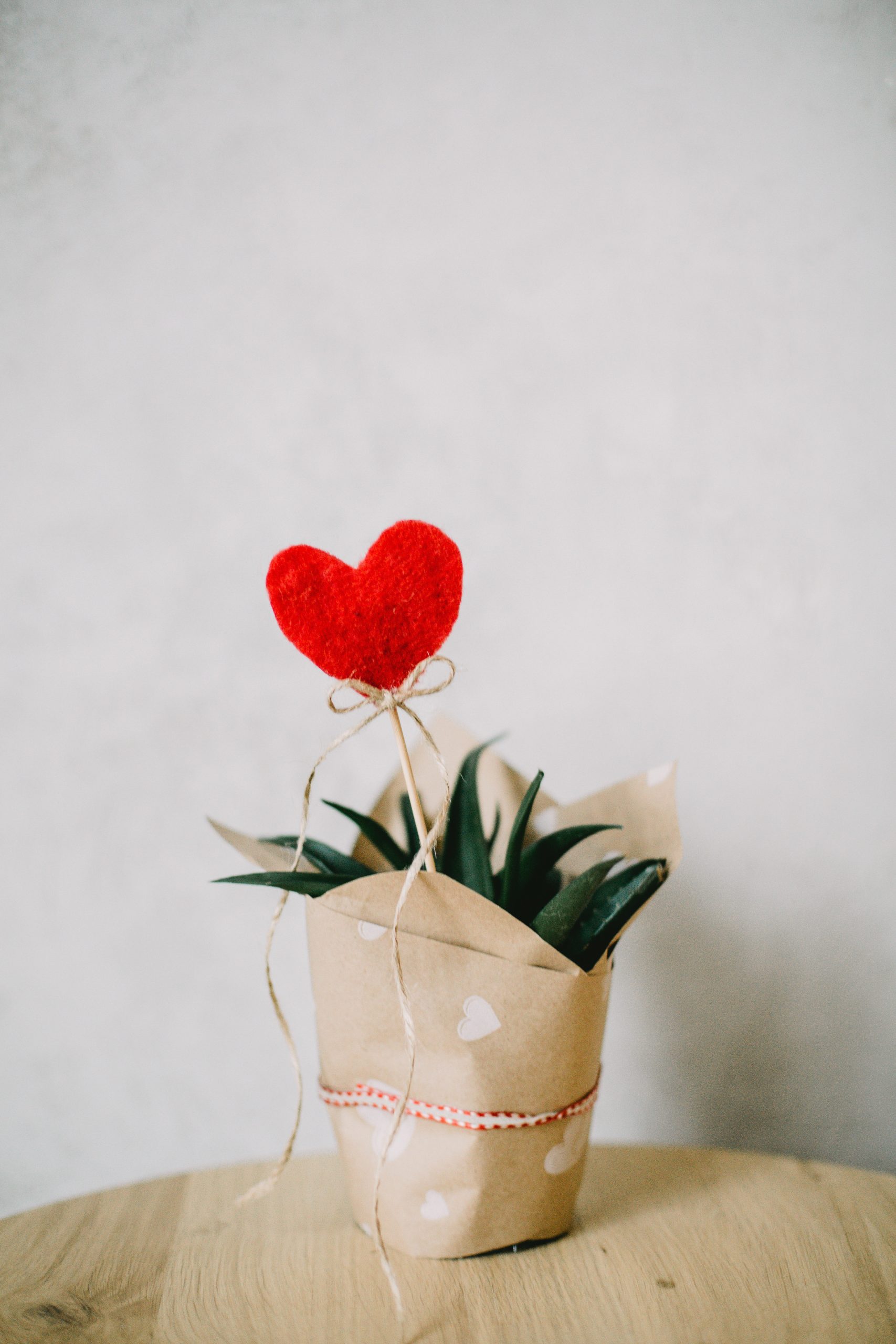So you have decided to get on board with the indoor plant trend and add some indoor plants to your office or home. Great news! Your friends at Good Earth Plant Company compliment your good decision to bring nature into your indoor spaces. Our whole business is built around enriching peoples’ lives with plants. We know you’ll enjoy your new green roommates.
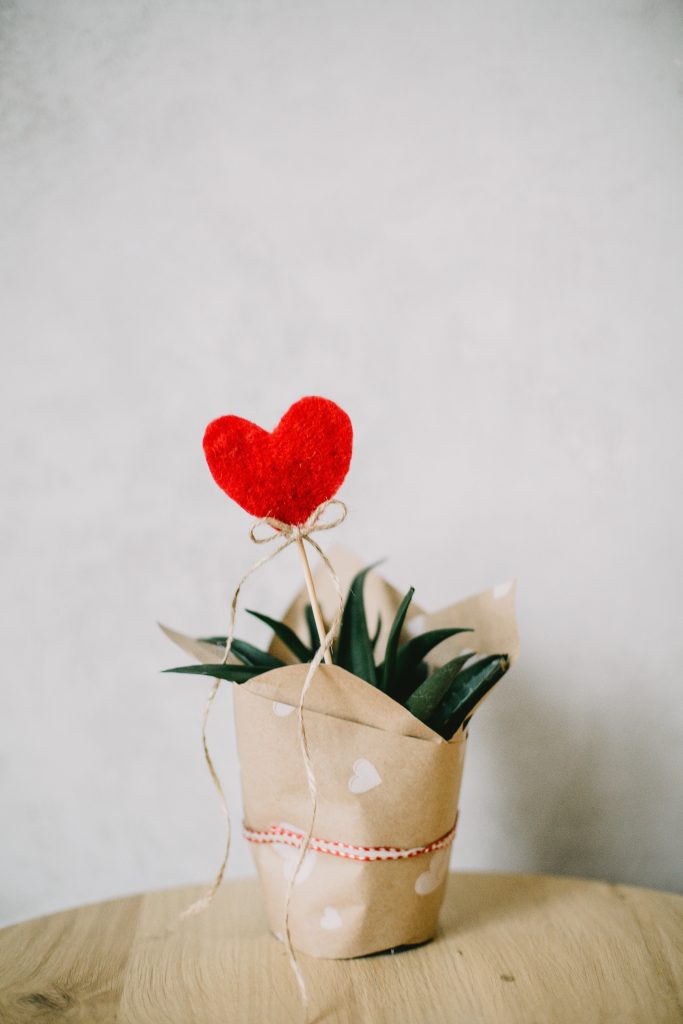
Use our tips to bring home a healthy indoor plant you’ll love for many years to come. Photo: Daria Shevtsova/Pixabay
It can be a real downer though when your new plants don’t flourish. It’s depressing to watch it die on you. We don’t want this to happen! Short of taking one of our horticultural technicians with you while you’re shopping, follow Good Earth Plant Company’s tips for bringing home a healthy indoor plant. And start with choosing a good source to buy your plants.
When you go shopping for plants, it might seem a little overwhelming. There are a WHOLE lot of choices. We encourage you to do a little homework long before you set foot in a nursery. Read a few of our previous blog posts on good plant choices for your conditions and skill level here. Or join one of the many online social media groups of people who love plants. They are friendly folks and they love giving advice to new plant parents.
There are essentially two ways to choose a plant. One, pick a plant and figure out where to put it based upon your environment; or two, determine the environment where you want to put a plant and select one that will thrive under those conditions.
Once you know the type of plant that will flourish in your light, humidity, and temperature conditions, head to the nursery. You find yourself standing in front of 20 different choices of the same plant. Which one should you take home to ensure your success? Which one is the healthiest? How can you tell?
Look for the following signs of a healthy indoor plant:
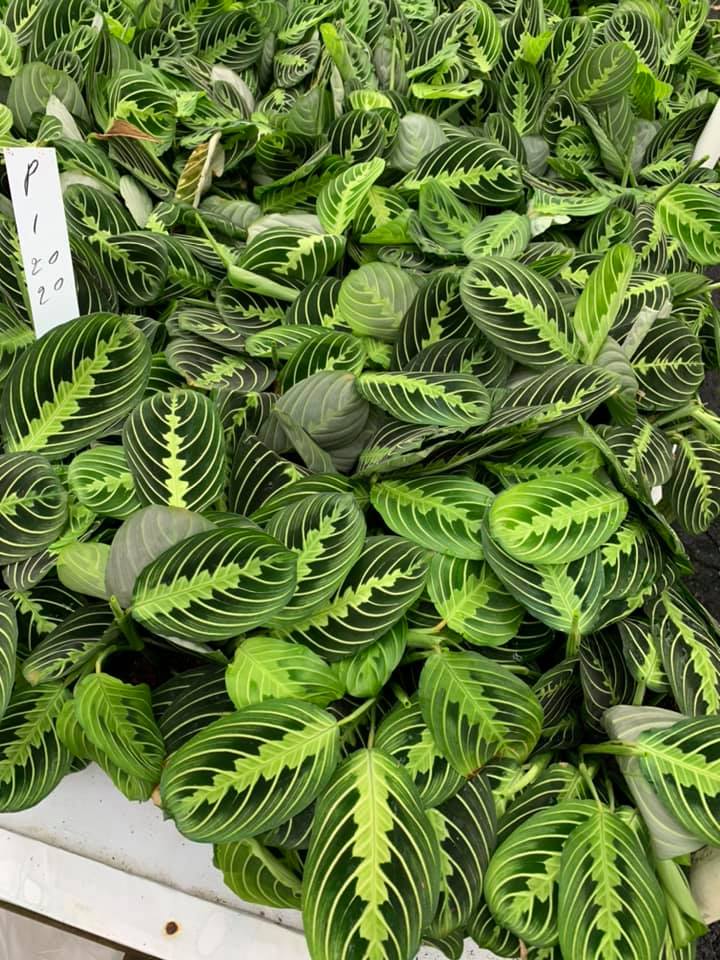
Healthy plants like these Maranta lemon lime prayer plants at Olive Hill Greenhouses in Fallbrook should show signs of growth. Photo: Jim Mumford
Growth: Healthy plants should be growing. There should be young new leaves emerging, and if it is a flowering plant there should be flower buds ready to open.
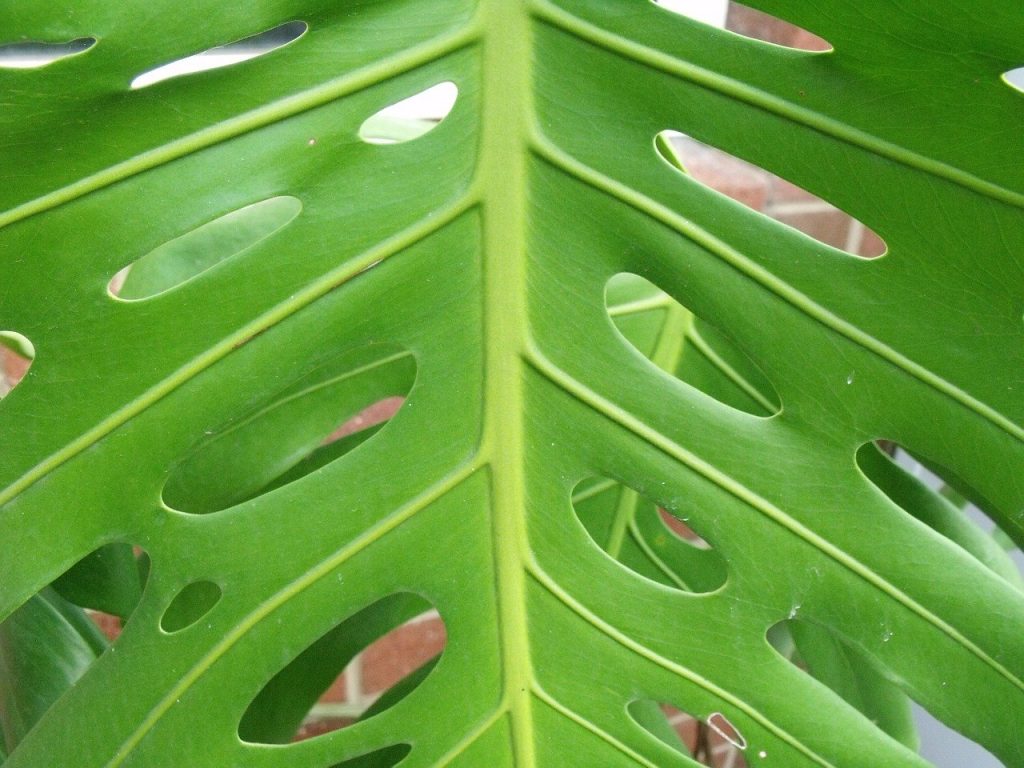
Look for green, shiny leaves without any discoloration or distortion. Photo: Ursula Irwin/Pixabay
Color: With the exception of variegated colored leaves, healthy plant leaves are green! If you have done your homework you should know how green a particular plant looks. Some are darker than others. The color should be even. Avoid plants with yellow or brown leaves, including around the edges. Leaves shouldn’t have any pale patches. Healthy plant leaves also have a nice sheen. If there is a little dust on the leaves, see if you can gently check leaf condition.
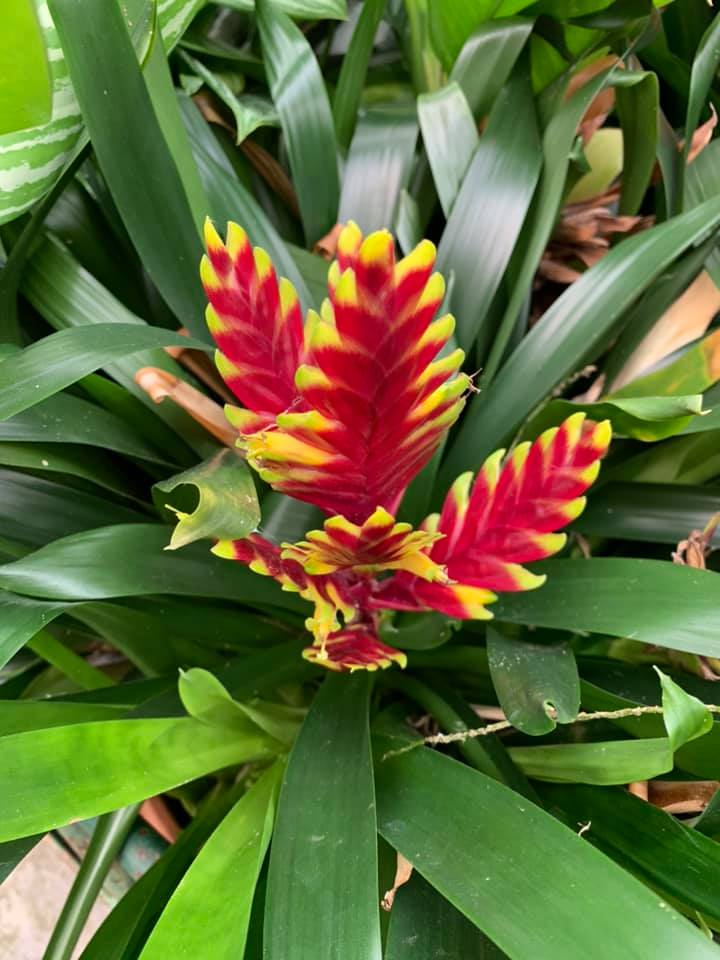
Healthy plants grow in a uniform way. This Vresia unknown at Olive Hill Greenhouses in Fallbrook has received the right amount of uniform light and water in comfortable temperatures. Photo: Jim Mumford
Condition: Healthy plants grow in a uniform way. The growth should be more or less even on all sides. Visualize the plant cut in half – are both halves even? If a plant grows in uneven light, it will lean or grow toward the light source. This might mean the plant is weakened from growing in too little light.
If you pick up the plant and lots of leaves fall off, or you notice distorted leaves, choose another plant without these warning signs.
When you pick up the plant, it should not wobble around in the container. This can be a sign of rotting roots, fungus, bacterial infection, or a grower that put out their product before it was ready.
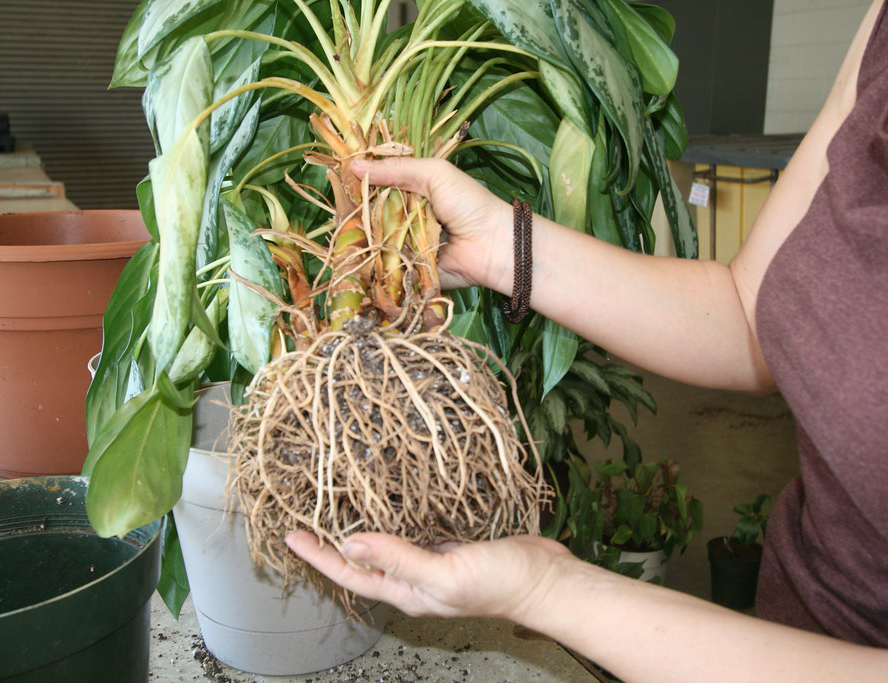
Healthy roots should be firm, and a white or tan color. Photo: Gardening Solutions/Flickr
Roots: It’s hard to see the roots sometimes in a pot, but at minimum you should check and see if the plant is root bound, where the roots are crowded into the pot. Pick up the container and look at the bottom. Are the roots coming out of the drainage hole? This means it’s been in the container too long. It might not be a deal breaker. It means the plant is growing and that’s good. But you’ll need to repot it soon.
The advantage of being able to see the roots is checking their condition. Pop it out of its pot and take a look They should be firm, white or tan, and have no rotting smell. (Yes, you can take a sniff). Plants with roots that stink or look mushy have root rot. It’s almost impossible to save them and you don’t need that kind of challenge.
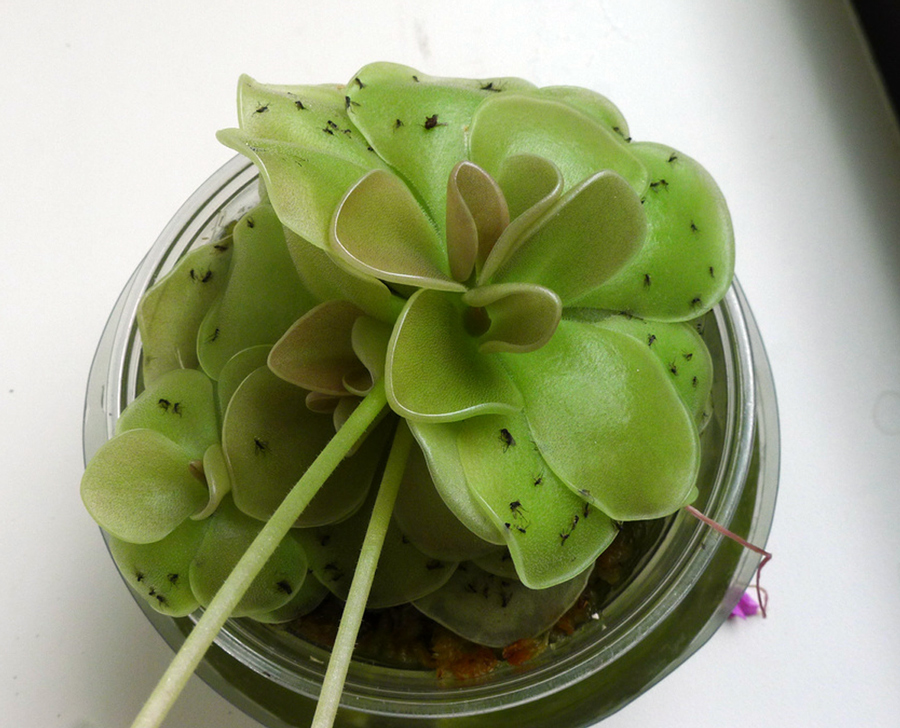
You’re not seeing spots, you’re seeing fungus gnats on your plants.
Pests: Some of our most popular blog posts are about indoor plant pests for a good reason. Pests can be tough to fight off. So don’t give pests a ride home on your new plants! They can spread to other healthy plants.
Check them carefully for the signs of common pests like fungus gnats, spider mites, scale, or other problems. Look at the underside of the leaves and along the stems where bugs like to live.
If you notice any sticky looking residue, webs, specks, or debris, these can be signs of pests even if you don’t see anything crawling. Distorted curled foliage can also be a sign of pests. Pass on these plants. You might feel silly, but bring a magnifying glass with you to help inspect the plants!
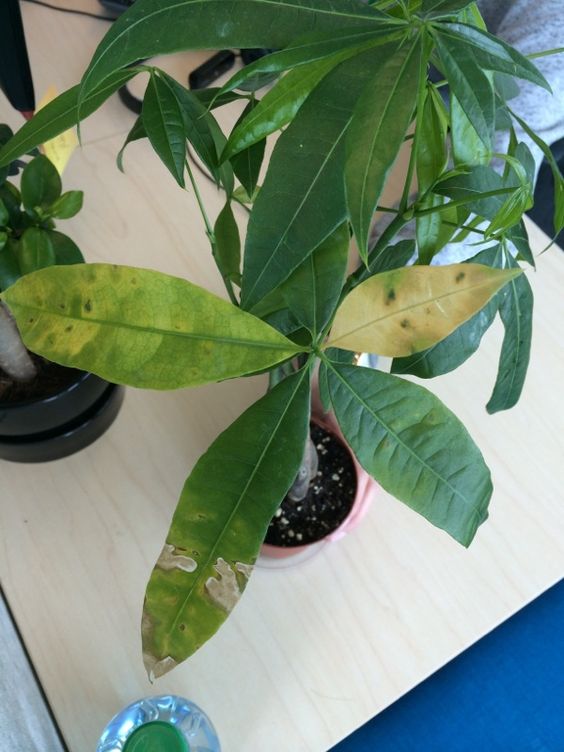
The leaves of this Schefflera show symptoms of many possible health problems. Photo: Pinterest/Garden Answers
Damage: Curled leaves, distorted growth, weird color blotches, sections missing growth, holes, signs of chewing, rough edges, or any other sort of distortion are never good signs. Choose another plant even if it generally looks healthy.
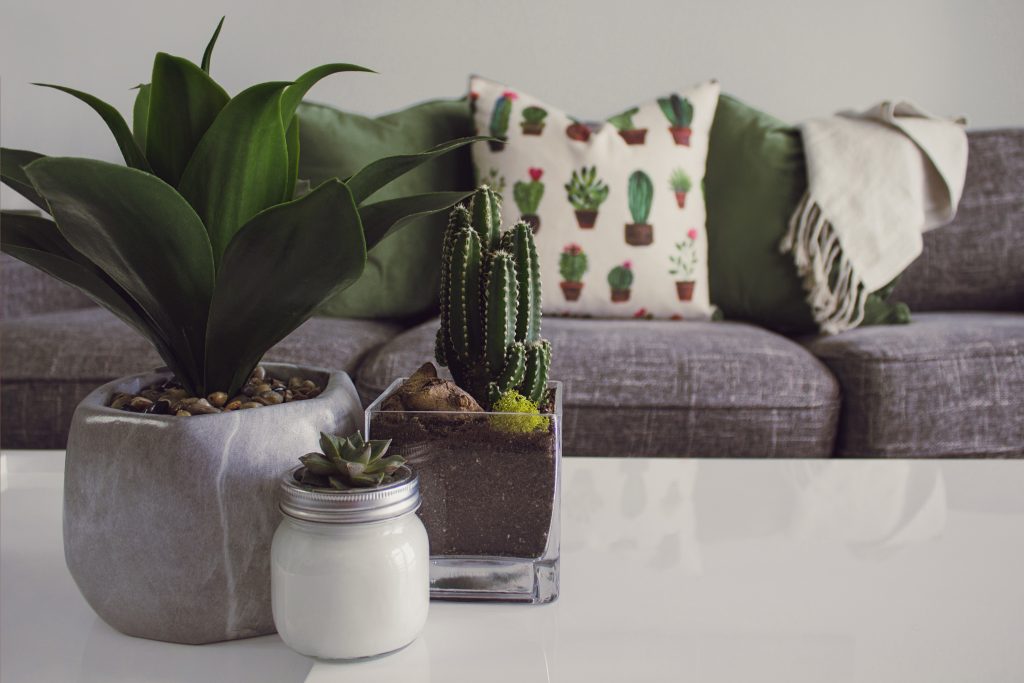
We know you’re excited to add a new plant to your collection, but it’s a smart precaution to put it into quarantine for a few weeks to be sure no hidden pests infest any other plants. Photo: Designacologst/Pixabay
Even if you’ve gone through your checklist and think you’ve brought home a healthy plant, it’s a good idea to isolate it for a few weeks to protect any other plants in your home from secret hitchhiking bugs or diseases. Put them in a “quarantine” area away from other plants in your home and keep a close eye on them before you introduce them to the rest of your plants.
Special advice if you have pets or young children: Doublecheck to make sure your plant choices aren’t toxic to curious pets or kids that might grab or chew on plants. We have a good list of safe, non-toxic plants for you here.
One final warning: Indoor plants are like potato chips. You can’t have just one. We think of plants as a healthy addiction!

